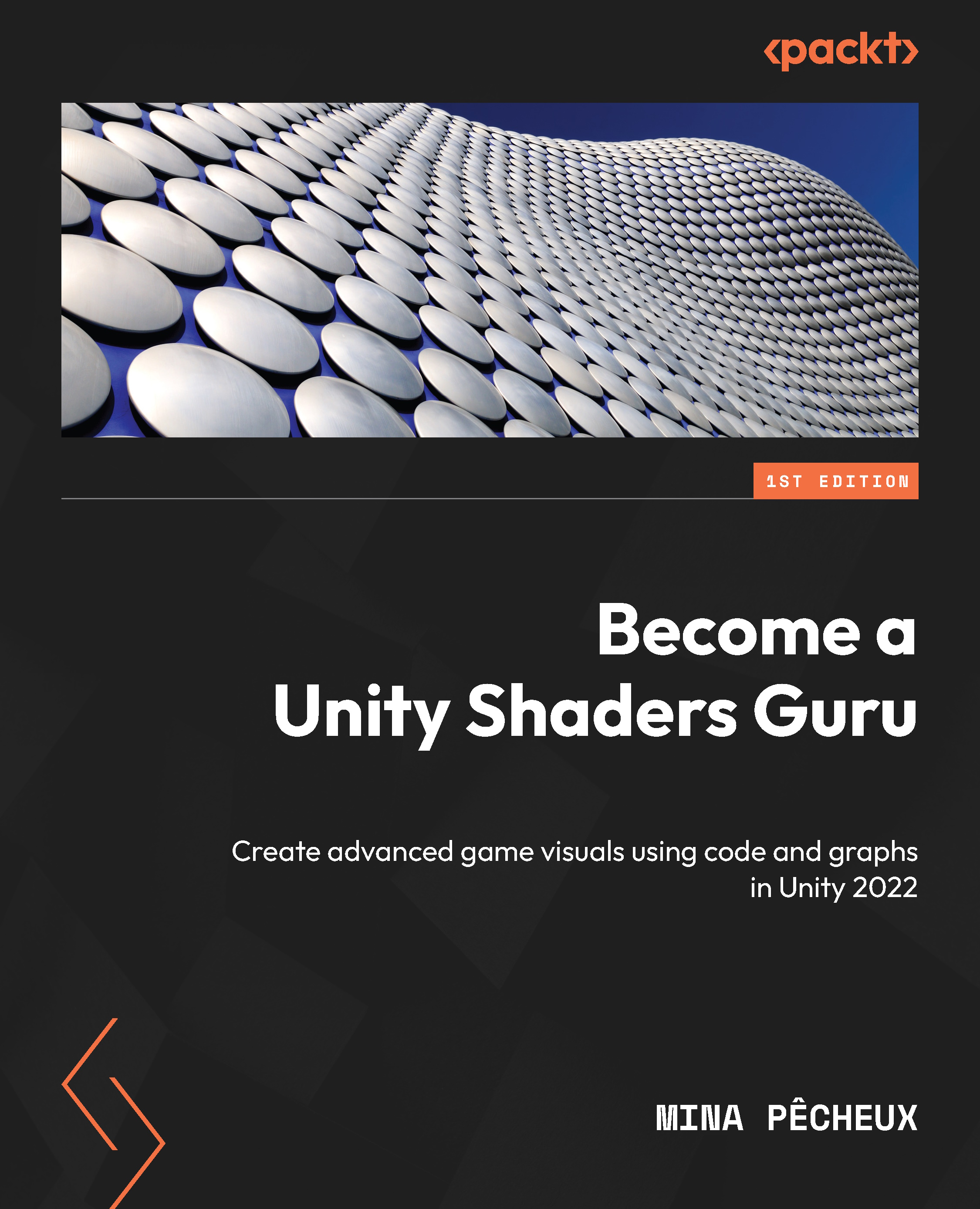-
Book Overview & Buying

-
Table Of Contents
-
Feedback & Rating

Become a Unity Shaders Guru
By :

Become a Unity Shaders Guru
By:
Overview of this book
Do you really know all the ins-and-outs of Unity shaders? It’s time to step up your Unity game and dive into the new URP render pipeline, the Shader Graph tool, and advanced shading techniques to bring out the beauty of your 2D/3D game projects!
Become a Unity Shaders Guru is here to help you transition from the built-in render pipeline to the SRP pipelines and learn the latest shading tools. With it, you’ll dive deeper into Unity shaders by understanding the essential concepts through practical examples. First, you’ll discover how to create a simple shading model in the Unity built-in render pipeline, and then in the Unity URP render pipeline and Shader Graph while learning about the practical applications of both. You’ll explore common game shader techniques, ranging from interior mapping to adding neon outlines on a sprite or simulating the wobble of a fish. You’ll also learn about alternative rendering techniques, like Ray Marching.
By the end of this book, you’ll have learned to create a wide variety of 2D and 3D shaders with Unity’s URP pipeline (both in HLSL code and with the Shader Graph tool), and be well-versed with some optimization tricks to make your games friendly for low-tier devices as well.
Table of Contents (23 chapters)
Preface
Part 1: Creating Shaders in Unity
 Free Chapter
Free Chapter
Chapter 1: Re-Coding a Basic Blinn-Phong Shader with Unity/CG
Part 2: Stepping Up to URP and the Shader Graph
Chapter 2: The Three Unity Render Pipelines
Chapter 3: Writing Your First URP Shader
Chapter 4: Transforming Your Shader into a Lit PBS Shader
Chapter 5: Discovering the Shader Graph with a Toon Shader
Part 3: Advanced Game Shaders
Chapter 6: Simulating Geometry Efficiently
Chapter 7: Exploring the Unity Compute Shaders and Procedural Drawing
Chapter 8: The Power of Ray Marching
Part 4: Optimizing Your Unity Shaders
Chapter 9: Shader Compilation, Branching, and Variants
Chapter 10: Optimizing Your Code, or Making Your Own Pipeline?
Part 5: The Toolbox
Chapter 11: A Little Suite of 2D Shaders
Chapter 12: Vertex Displacement Shaders
Chapter 13: Wireframes and Geometry Shaders
Chapter 14: Screen Effect Shaders
Index
Other Books You May Enjoy
Appendix: Some Quick Refreshers on Shaders in Unity
Customer Reviews

